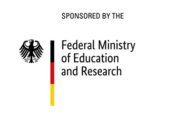Seasonal water resources management in semi-arid regions: Transfer of regionalized global information to practice - SaWaM

Funding by: BMBF - Bundesministerium für Bildung und Forschung
Funding ID: 02WGR1421F
Project executing or management agency: Projektträger Karlsruhe
Funding period: 2017 bis 2020
Project partners: Karlsruhe Institute of Technology (KIT) Garmisch-Partenkirchen I University of Potsdam I Stuttgart University I University of Marburg I Helmholtz Center for Environmental Research UFZ I Helmholtz Centre Potsdam – German Research Centre for Geosciences (GFZ) I Technical University of Berlin I Lahmeyer International GmbH (Bad Vilbel) I GAF AG (Munich)
The essential resource of water is distributed unevenly across the regions. Water supply is potentially insecure for about 80% of the world’s population. According to estimates of the UN, by 2025 presumably 1.8 billion people will be affected by critical water scarcity meaning access to less than 500 m³ water per person and year. Increasing water scarcity is caused by global population growth and climate change.
The collaborative project “Seasonal water resources management in semi-arid regions: Transfer of regionalized global information to practice” (SaWaM) is funded in the frame of the research initiative Global Resource Water (GROW) and coordinated by the Karlsruhe Institute of Technology (KIT). In the project of three years’ duration seven research institutions as well as two German companies are involved from the fields of climatology, hydrology, ecology and remote sensing.
In semi-arid regions, for several months precipitation is smaller than evaporation and pronounced long dry periods occur. In the mostly underdeveloped countries affected, hardly any observation data are available describing the water cycle. Scientists are increasingly forced to rely on satellite or model data. In general, these data are very coarsely resolved and subject to large uncertainties. Therefore, their use for regional water resources management has been limited so far.
The SaWaM project aims at analyzing the performance of global data products and optimizing these data for decision support with the help of newly developed methods. One of the main goals is the seasonal forecast of the most important water resources parameters for six to twelve months in advance. SaWaM will provide information about the future development of water availability, above all for the management of reservoirs and irrigated agriculture.
To ensure practical applicability of the developed methods, the project consortium cooperates closely with local decision makers, research institutions, and companies in the five semi-arid target regions. The planned work will primarily focus on the three development regions – Iran, Sudan, and Brazil. In another two regions – Ecuador and West Africa – the general applicability of the methods and selected other aspects will be studied.
For using the developed methods in the different regions, they have to meet different requirements. The region-specific target parameters will be defined in close cooperation with local decision makers. These parameters will serve as a basis for a prototype online portal providing an access point to the results of the project. Among others, SaWaM will provide information on sediment input into the Upper Atbara dam complex (Sudan) in the Nile basin as well as improved hydro-meteorological data for sustainable water resources management of Lake Urmia in Iran.
Within the framework of SaWaM, the remote sensing section at GFZ Potsdam is responsible for the large-scale analysis of seasonal and long-term vegetation dynamics which will be derived from satellite time series data. The resulting land use specific information on vegetation dynamics will be used to validate regional vegetation modeling. In addition, the globally available optical satellite time series data, in particular the new Sentinel-2 satellite mission of the Copernicus Earth observation program, will be evaluated in their suitability for modeling of ecosystems, vegetation states and erosion/sedimentation processes.








